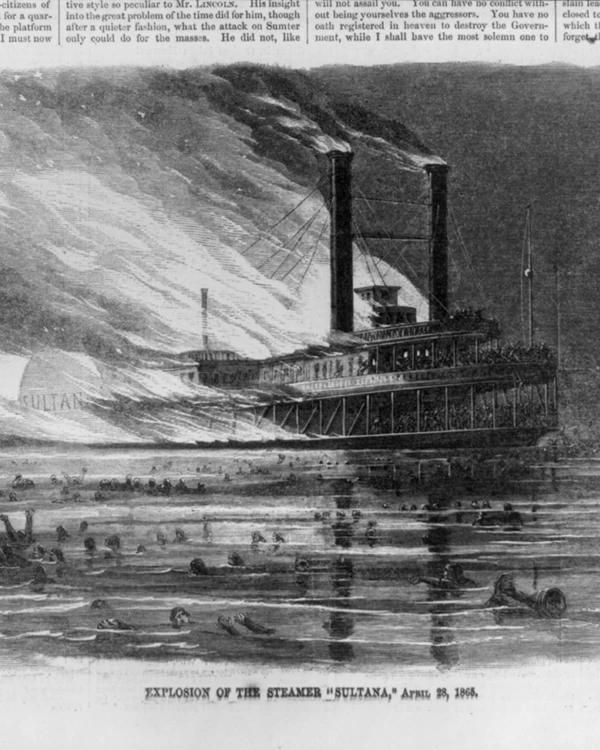Last updated: August 31, 2025
Person
Valmore Lambert

Library of Congress
Early Life
Born in 1831 in Ohio to Aaron and Phebe Lambert, Valmore was likely the second oldest of seven children. Like his father, he was a farmer. At just 19, Valmore married Rebecca Angelina Fouch on June 21, 1850, and lived in Warron Ohio with their children.
Civil War
Lambert enlisted in the U.S. Army on July 31, 1862, at Defiance, Ohio, and was assigned to the 100th Ohio Infantry. The regiment saw heavy service during the war and participated in 16 engagements.
He, along with the rest of the 100th Ohio Infantry, were a part of the U.S. Army’s East Tennessee Campaign which liberated civilian Unionists suffering under Confederate control. The Army of the Ohio, led by Major General Ambrose E. Burnside, launched the campaign from Camp Nelson on August 16, 1863. Lambert believed that the army’s cause was a sacred crusade. He penned a letter home to his family in Ohio from Knowxville, Tennessee, stating:
God will in his own good time and way, bring the rebs (which is the means in Gods hands) to a sense of their folly, and they will get to thinking of how much more happy they were under the old flag, than under the new.
In this letter, Lambert also expresses his conflicted feelings as he grapples with his role as a soldier and as a man of faith. The letter concludes with a haunting statement:
I cant repent of what I am doing and then go ahead every day doing what I pray God to forgive me for. Sometimes I think I will quit writing to everybody and let fates take its course.
Surviving Andersonville
In 1864, The 100th Ohio Infantry participated in the Battle of Utoy Creek during the Atlanta Campaign, where Lambert was captured. The battle resulted in the loss of an estimated 300-2000 US and 20-250 Confederate soldiers. Lambert was sent to Andersonville—the infamous Confederate prison in Georgia—where he remained for 8 months.
Isolated amongst pine trees and hard red clay, conditions in Andersonville were notoriously harsh due to illness, overcrowding, lack of food, and contaminated water. The prison operated for less than 2 years, but over 13,000 US soldiers perished. Lambert was one of the fortunate soldiers who survived. When the war ended, he and over 1900 former prisoners boarded the steamboat Sultana, which was set to bring them home.
A Tragic End
On April 27, 1865, as the Sultana was heading north from Memphis, Tennessee, three of the four boilers exploded. The boat had been overloaded with passengers far beyond its capacity, and prior to the journey, Captain James Cass Mason had opted to put a temporary fix on a leaking boiler rather than repairing the ship, which would have taken more time. The explosion of the Sultana is to this day known as the worst maritime disaster in US history, and no one was ever held accountable for it. More than 1000 men lost their lives, and Private Valmore Lambert, who had survived two years of fighting in the Civil war, and eight months in the nightmare of Andersonville, was among them.The ship that was meant to be his deliverance was the reason he never made it home.
The location of Private Lambert’s remains are unknown, as may of the bodies from the disaster were never recovered. The bodies that were found were interred at Fort Pickering cemetery and were later moved to the Memphis National Cemetery.
After his death, Lambert’s wife Rebecca remarried to a man named John Brechbill in the year 1869 and had a son. She died July 22, 1912, at the age of 83 in Defiance County, Ohio and is buried in Ayersville Cemetery.
